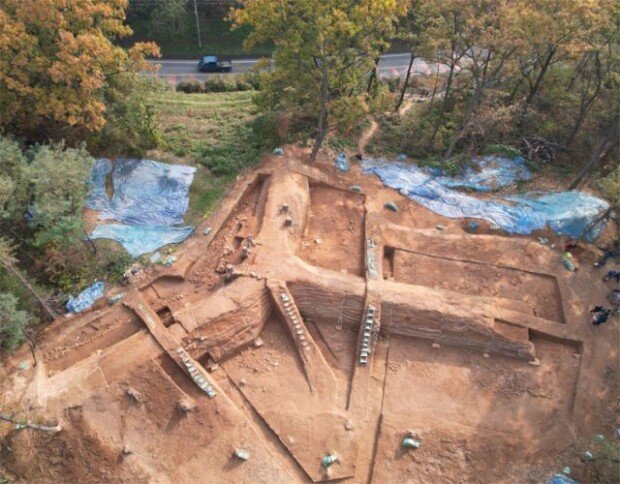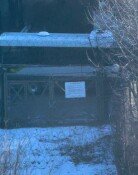A 19-meter Goryeo bastion discovered in Ganghwa Castle
A 19-meter Goryeo bastion discovered in Ganghwa Castle
Posted December. 03, 2021 07:47,
Updated December. 03, 2021 07:47

Chiseong, a fortification projecting outward from the castle wall to attack the enemy, was discovered at Ganghwa Castle, a capital in the Goryeo dynasty.
The National Ganghwa Cultural Heritage Research Institution running under the umbrella of the Cultural Heritage Administration announced on Thursday that the bastion, with a length of 19 meters, width of 4.5 to 4.7 meters, and height of 1.3-2.6 meters, was confirmed in sight in the southern section of the central castle wall of Ganghwa Castle in Ganghwa County, Incheon. This is the largest bastion in the Goryeo dynasty ever found in South Korea. Earlier at Yongjang Castle in Jindo County, South Jeolla Province and at Hoam-dong Earthen Fortress in Chungju, North Chungcheong Province, also castles in the Goryeo dynasty, similar bastions were found, but they were no longer than 10 meters. Vestiges of the era were also found in the surroundings, such as giwa, rocks used to fasten the gate, and foundation stones, most of which are presumed to be the materials used for construction of the castle.
Goryeo moved its capital to Ganghwa in 1232 in the face of the Mongol invasion. During the period of resistance to the Mongol invasion from 1232 to 1270, Goryeo erected Ganghwa Castle comprised of three-walled enclosures—outer castle, middle castle, and inner castle—to fortify the defensive capability. The bastion discovered today was constructed in the same manner as the castle wall was built—an wooden frame was filled with soil in several layer.
“Of all earthen castles built in the Goryeo dynasty, the middle castle of Ganghwa Castle was built with the most sophisticated construction method at the time,” said Sim Gwang-joo, the chief of Korea Land & Housing Corporation. “The bastion was so solidly assembled that we can still discern the trace of the wooden frame from the earthwork.”
71wook@donga.com







